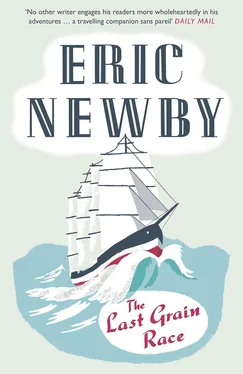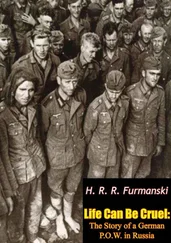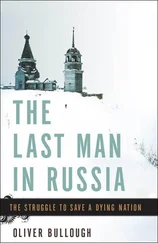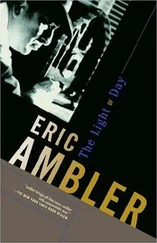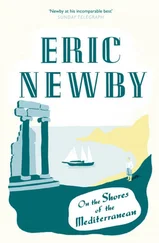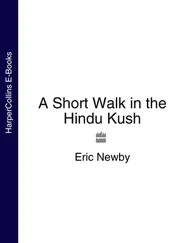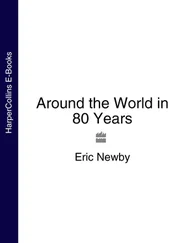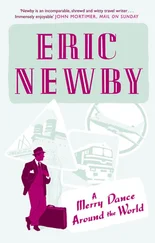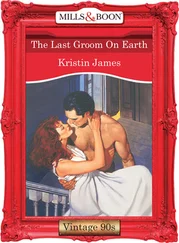THE LAST GRAIN RACE
ERIC NEWBY

William Collins
An imprint of HarperCollins Publishers 77–85 Fulham Palace Road, Hammersmith, London W6 8JB WilliamCollinsBooks.com
This eBook first published in Great Britain by William Collins in 2014
First published in Great Britain in 1956 by Martin Secker & Warburg Ltd
Copyright © Eric Newby 1956
Eric Newby asserts the moral right to be identified as the author of this work
Cover design by www.nathanburtondesign.com
A catalogue record for this book is available from the British Library
All rights reserved under International and Pan-American Copyright Conventions. By payment of the required fees, you have been granted the non-exclusive, non-transferable right to access and read the text of this e-book on-screen. No part of this text may be reproduced, transmitted, down-loaded, decompiled, reverse engineered, or stored in or introduced into any information storage and retrieval system, in any form or by any means, whether electronic or mechanical, now known or hereinafter invented, without the express written permission of HarperCollins
Source ISBN: 9780007597833
Ebook Edition © November 2014 ISBN: 9780007597840
Version: [2014-10-07]
A NOTE ON THE ILLUSTRATIONS
All photographs in this book are drawn from a collection of several hundreds taken by the author in the course of the voyage, none of which had been previously published until the book’s first publication in 1956. The copyright is held by the author. The illustration on p.17 is reproduced by kind permission of the Editor, The Belfast News-Letter .
LLOYD’S WEEKLY SHIPPING INDEX MAY 5th, 1904
On April 18th there was launched at Port Glasgow by Messrs William Hamilton and Co. a four-masted barque of about 3,200 tons gross, the last of two sister vessels built for Messrs G.H.J. Siemers and Co of Hamburg, for their nitrate trade: vessel has a length of 320 feet (b.p.), a beam of 47 feet and a depth of 28 feet to main deck, and is classed at Germanischer Lloyd’s under special survey. With the view of minimizing labour numerous winches are fitted on board for working of sails and the equipment also includes on 6-h-p. and one 10-h-p. petrol winch. During construction the vessel has been supervised by Mr Alexander Craig on behalf of Germanischer Lloyd’s, and by Captains Opitz and Gerdau on behalf of the owners. The barque was named Kurt (by Mrs T. W. Hamilton).
LLOYD’S LIST AND SHIPPING GAZETTE MARCH 5th, 1935
MOSHULU (ex ‘Kurt’). – Steel four-masted barque: 5,300 tons d.w., 3,116 gross, 2,911 net. Built Port Glasgow, 1904 Sold by the Charles Nelson Company, Inc., San Francisco, to Captain Gustaf Erikson, Mariehamn. It is understood that the sale is ‘subject to survey’.
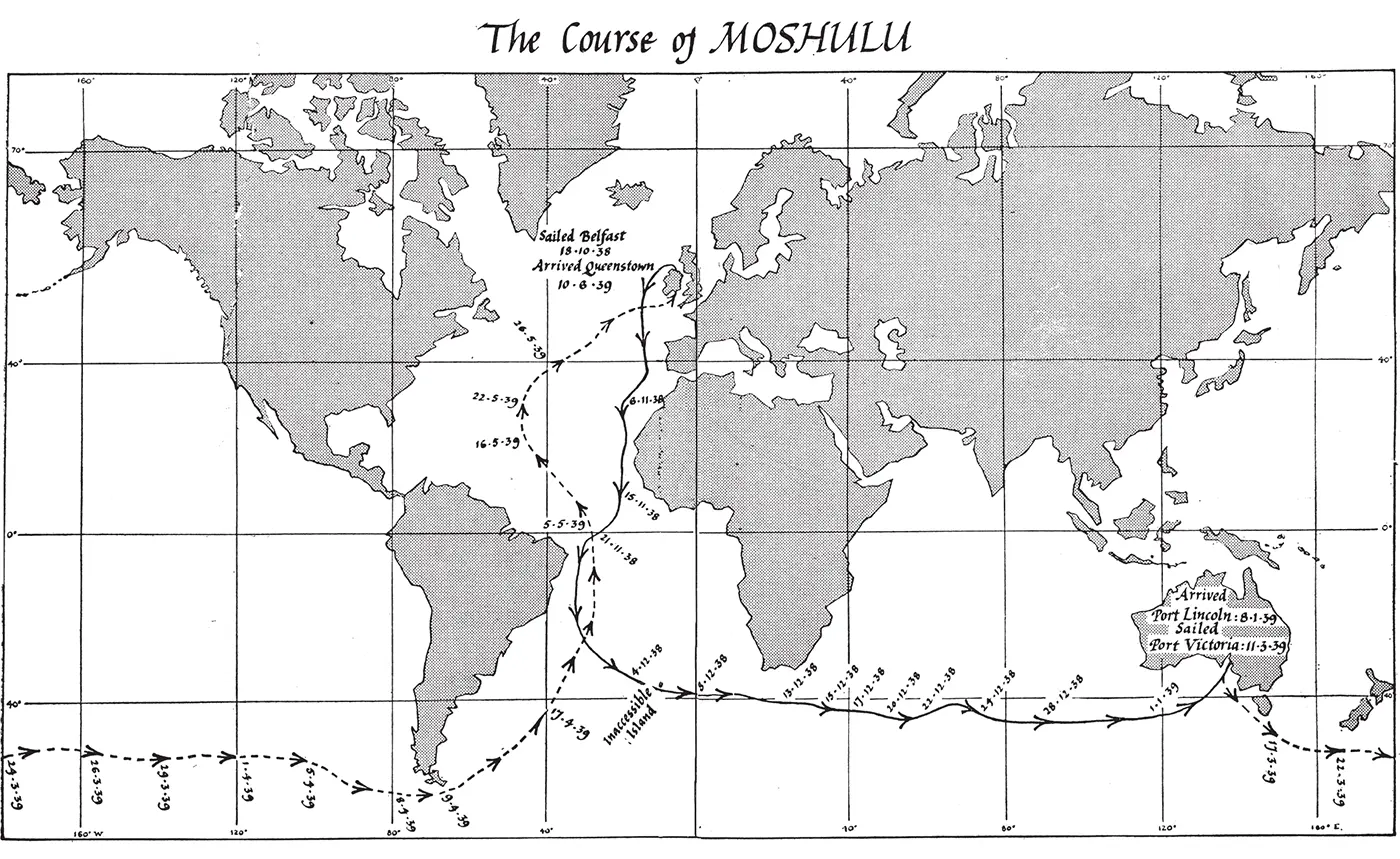
Contents
Cover
Title Page
Copyright
A Note on the Illustrations
Extracts From Lloyd’s Index and List
Sail Plan and Diagram of Running Rigging
Map of Moshulu ’s Course Round the World
Introduction to the 1981 Grafton Edition
Chapter 1: Wurzel’s
Chapter 2: Mountstewart
Chapter 3: Fitting Out
Chapter 4: Op the Rigging
Chapter 5: Over the Side
Chapter 6: Sömmarström and His Sails
Chapter 7: Wild Life in the Irish Sea
Chapter 8: The Watch Below
Chapter 9: ‘Ängelskit’ and ‘Kabelgarn’
Chapter 10: ‘Rundvask’
Chapter 11: Kroner
Chapter 12: ‘England’s Hope’
Chapter 13: Inaccessible Island
Chapter 14: ‘God Jul’
Chapter 15: Into Battle
Chapter 16: Cape Catastrophe
Chapter 17: Port ‘Veek’
Chapter 18: The Last Grain Race
Chapter 19: Storm in the Southern Ocean
Chapter 20: Cape Horn
Chapter 21: ‘Like Spreeng After Vinter’
Chapter 22: North of the Line
Chapter 23: The Race Is Won
The Beaufort Scale
The Grain Race 1939
Moshulu – Belfast to Port Lincoln
Moshulu – Port Victoria to Queenstown
Later History of Moshulu
Footnotes
Acknowledgements
About the Author
Also by Eric Newby
About the Publisher
Introduction to the 1981 Grafton Edition
Although I did not know it when I joined the four-masted barque Moshulu in Belfast in the autumn of 1938, this was to be her last voyage in the Australian grain trade, as it was to be for the rest of Gustav Erikson’s fleet of sailing ships, as well as for most of the German and Swedish ships which took part in the 1939 sailings from South Australia to Europe. In that year thirteen three-and four-masted barques sailed for Europe, eleven of them by way of Cape Horn, and by the autumn all of them were back in European waters; but although one or two of them continued to sail during the first year or so of the war, carrying various cargoes, and some even survived into the post-war years, the big Finnish fleet of Gustav Erikson was dispersed and the ships never came together again to form the great concourse of vessels which lay in Spencer Gulf, South Australia, in the early months of 1939.
Today there are no more steel, square-rigged sailing ships left trading on the oceans of the world. If any more are built for commercial purposes it seems certain that they will be as different from the barques that I knew as the crews which will be employed to man them will be different.
Gustav Erikson of Mariehamn in the Baltic was the last man to own a great fleet of sailing ships. He employed no P.R.O.s to improve his image. I never met any foremast hand who liked him – it would be as reasonable to expect a present-day citizen of Britain to ‘like’ the Prime Minister or an Inspector of Taxes. In our ship he was known as ‘Ploddy Gustav’, although most of us had never set eyes on him. The thing that warmed one to him was the certainty that he was completely indifferent as to whether anyone liked him or not. He was only interested in his crews in so far as they were necessary to sail his ships efficiently, and for that reason he ensured that they were adequately fed by sailing-ship standards, and that the ships they manned were supplied with enough rope, canvas, paint and other necessary gear to enable them to be thoroughly seaworthy. He certainly knew about ships. Originally, as a boy of nine, he had gone to sea in a sailing vessel engaged in the North Sea timber trade. At the age of nineteen he got his first command in the North Sea, and after that spent six years in deep-water sail as a mate. From 1902 to 1913 he was master of a number of square-rigged vessels before becoming an owner. By the ’thirties the grain trade from South Australia to Europe was the last enterprise in which square-riggers could engage with any real hope of profit, and then only if the owner had an obsessional interest in reducing running costs. Erikson had to pay his crews (which had to be as small as was commensurate with safety) as little as possible. He could not afford to insure his ships, most of which he had obtained at shipbreaker’s prices; but at the same time he had to maintain them at such a standard that they were all rated 100 A1 at Lloyd’s, or an equivalent classification elsewhere. He was respected and feared as a man over whose eyes no wool could be pulled by the masters whom he employed to sail his ships, and the tremors they felt were passed on down to the newest joined apprentice. Of such stuff discipline is made. A now out-moded word, but sailing ships do not stay afloat and make fast passages at the pleasure of committees of seamen.
Читать дальше
